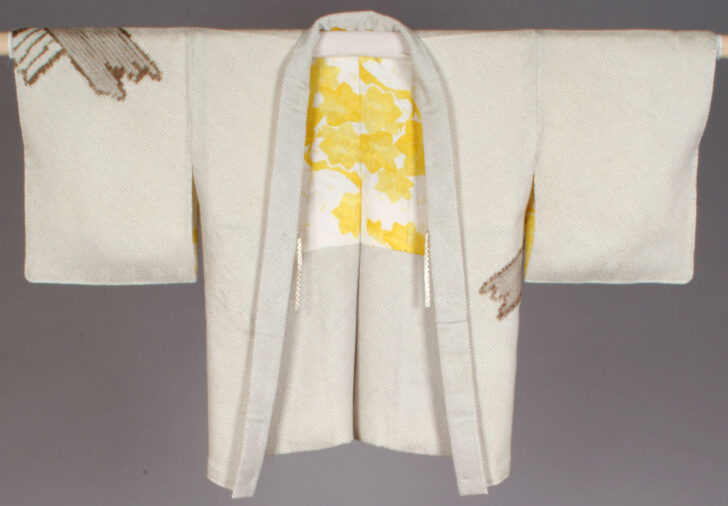Beige and brown Shibori haori with abstract design
Japanese

Description
Gallery Rotation Fall 2013
Haori
Japan, Showa period (1926–1989)
circa 1950–60
White silk with brown design and yellow and white silk lining
Gift of Howard and Patricia Yamaguchi, 2005/1.346
In the Edo period (1615–1868) the haori was a type of formal attire for men, but in the nineteenth century it was adopted by female entertainers in the capital, Edo (modern-day Tokyo), as a cloak for outdoor wear in mild weather. Later the haori became the standard outerwear for women who dress in kimono outside the home.
This haori was made using the traditional technique of shibori, in which tiny pinches of fabric are twisted up and tightly bound with thread before the whole piece of cloth is dyed. After dyeing, the binds are undone, leaving tiny rings of white around spots of color. This painstaking technique was in vogue among the rich merchant class in Edo (modern-day Tokyo) in the aesthetically heightened era of Genroku (the end of seventeenth century). The technique used here is sô shibori, in which the entire kimono or haori is covered with tiny dapples; in the late seventeenth century it was considered so outrageously luxurious that it was banned by sumptuary laws. This white haori is one of the sô shibori haori and kimono worn by Iwata Shizuko, a pioneering business woman, to work-related parties in the mid- to late twentieth century.
Subject Matter:
This haori required a labor intensive technique called shibori, in which hundreds of hours would have been spent tying up each small section where white can be seen on the fabric before immersing it in dye. Shibori textiles are very expensive due to the time and skill required to produce them.
Physical Description:
White silk with yokobiki kanoko dyed pattern with contrasting beige/brown tatebiki kanoko dyed pattern.
Usage Rights:
If you are interested in using an image for a publication, please visit https://umma.umich.edu/request-image/ for more information and to fill out the online Image Rights and Reproductions Request Form.